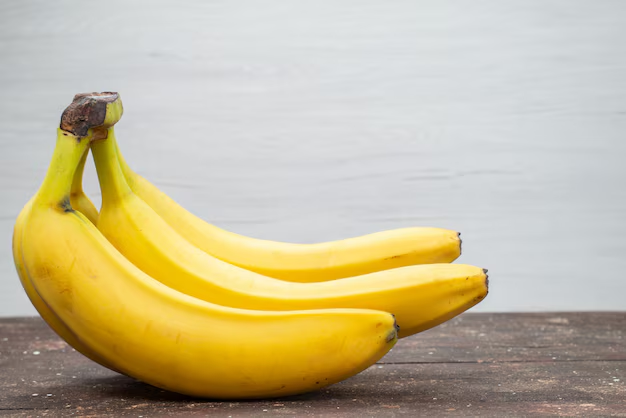How to Make Bananas Last Longer: Refrigeration Tips and Tricks
Bananas, with their sweet taste and nutritional benefits, are a staple in many households. But how do you keep them fresh longer? A common debate centers around whether bananas last longer in the refrigerator. Let’s explore this topic in depth, offering practical storage tips and understanding the science behind the ripening process.
🍌 Why We Love Bananas: A Quick Overview
Before diving into storage practices, it’s worth noting why bananas are such a beloved fruit worldwide:
- Nutritional Powerhouse: Bananas are rich in potassium, vitamin C, and dietary fiber, making them a healthy snack choice.
- Versatile Usage: From smoothies to banana bread, these fruits fit well into countless recipes.
- Convenience: With their natural packaging and no need for washing or preparation, bananas are the ultimate grab-and-go snack.
Understanding the importance of bananas in our diet emphasizes why preserving their freshness is crucial.
The Science of Banana Ripening
Bananas undergo a fascinating ripening process. Initially, they are green due to chlorophyll, and as they ripen, they turn yellow, then brown. The key player in this transformation is ethylene gas, a natural plant hormone that accelerates the breakdown of complex carbohydrates into simple sugars, making the fruit sweet.
Ethylene Gas: Friend and Foe
- Accelerator of Ripening: While ethylene is vital for ripening, it also means bananas can quickly become overripe if not monitored.
- Impact of Temperature: Warm temperatures increase ethylene production, hastening ripening, while cooler temperatures can slow it down.
🥶 Does Refrigeration Prolong the Life of Bananas?
To refrigerate or not to refrigerate—this is the core question. Let’s break down the pros and cons of refrigerating bananas:
Advantages of Refrigerating Bananas
- Slows Ripening: The cool environment significantly slows down ethylene production, thus extending the yellow phase of bananas.
- Preserves Nutrients: Slowing decay means nutrients remain intact for longer.
- Prevents Overripeness: Useful for those who prefer bananas slightly green or just ripe.
Disadvantages of Refrigerating Bananas
- Peel Discoloration: Bananas’ peels turn brown or black in the refrigerator, even though the fruit inside remains unspoiled and delicious.
- Change in Texture: Some find the texture of refrigerated bananas unpleasantly altered.
- Impact on Flavor: Cold can mute the flavor profile, making bananas taste less sweet.
🔍 Practical Guide to Banana Storage
To ensure your bananas stay fresh and tasty, consider these practical storage tips.
On the Counter vs. in the Refrigerator
- On the Counter: Best for green to slightly yellow bananas you plan to consume soon. Position them away from other fruits to avoid ethylene-induced acceleration.
- In the Refrigerator: Great for fully ripe bananas to prevent overripe mushiness. Refrigerate as soon as they reach your preferred ripeness.
Best Practices for Refrigerating Bananas
- Delay Refrigeration: Only refrigerate when bananas are at the ripeness you prefer. Doing so earlier can halt the ripening desired.
- Use a Produce Shelf: Store bananas in the produce section of your fridge to maintain optimal humidity.
- Use Banana Bunches: Keep bananas in a bunch to reduce ethylene exposure and slow ripening.
📚 Exploring Related Topics
Freezing Bananas: A Longer-Term Solution
If you get to the point where your bananas are too ripe for your taste, freezing is an excellent option.
- Peel and Slice: Peel bananas before freezing and slice or freeze whole to make smoothies, nice cream, or banana bread later.
- Storage Tips: Use airtight containers or freezer bags to prevent freezer burn and maintain freshness.
Combating Ethylene: Storage Tips for Other Fruits
Storing fruits like apples with your bananas can inadvertently speed up ripening due to ethylene. To maximize all your fruits' shelf life:
- Separate Ethylene-Producing Fruits: Store ethylene-sensitive fruits separately.
- Use Ethylene Absorbers: Consider incorporating commercial ethylene absorbers in your fruit bowl.
🚀 Key Takeaways
Here's a quick summary of how to extend the shelf life of your bananas, with practical consumer tips:
- 🟢 Use Room Temperature: Store bananas at room temperature until they reach desired ripeness.
- 🌡️ Refrigerate for Longevity: Once ripe, refrigerate to slow further ripening, being aware of peel discoloration.
- ❄️ Opt for Freezing: For overripe bananas, freeze for a versatile ingredient ready to use at any time.
- 📏 Ethylene Management: Keep bananas away from other ethylene-producing fruits to prolong freshness.
- 🍎 Separate & Save: Avoid storing bananas with apples and other ethylene-emitters to prevent rapid ripening.
By understanding these strategies, you can enjoy the freshness of bananas longer, reducing waste and ensuring a delightful eating experience. Optimize your banana storage today by integrating these practical tips into your routine. The next time you find your bananas turning prematurely brown, you’ll be equipped with the knowledge to slow things down and maximize enjoyment. 🍌
